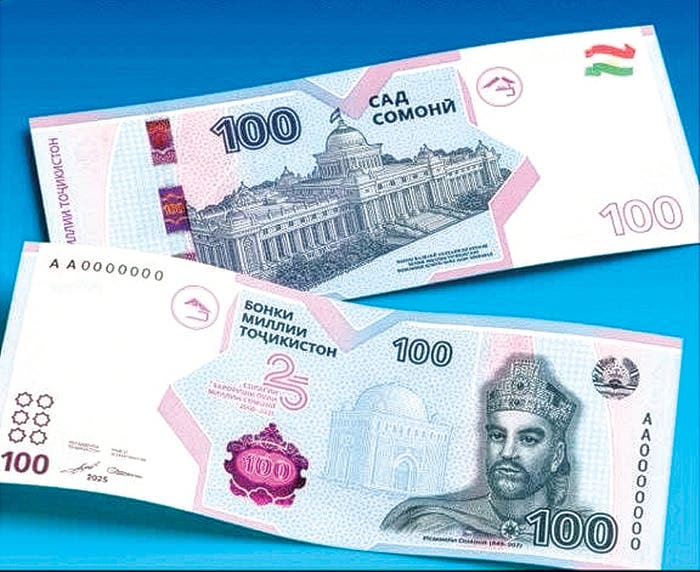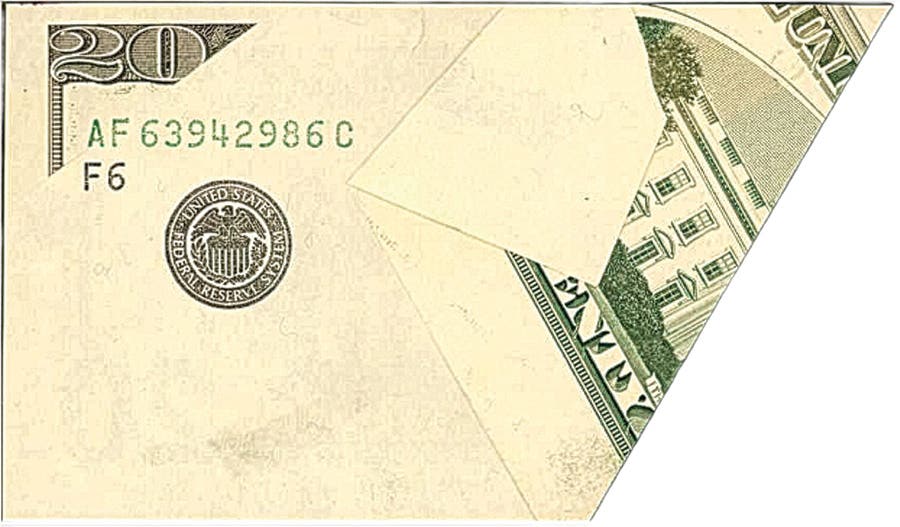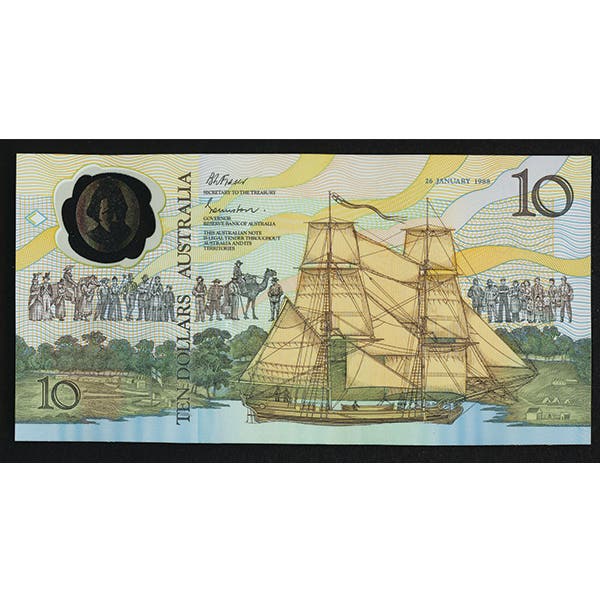Celebrating 50 Years of Bank Note Reporter
Congratulations to Bank Note Reporter on its Golden Jubilee of service to the currency collecting community. I am delighted to have been an integral part of the Bank Note Reporter…
Congratulations to Bank Note Reporter on its Golden Jubilee of service to the currency collecting community. I am delighted to have been an integral part of the Bank Note Reporter contributing team since 1997 – half of its existence! This month, as part of that celebration, I am going to reflect on my experiences writing for 25 years and how the currency market and currency collecting have changed, in my view, over that time.
I first got involved with Bank Note Reporter through former long-time editor David Harper, who I got to know at the annual American Numismatic Association Summer Seminars, held each summer in Colorado Springs. At that time, I was instructing courses in U.S. Large Size Currency with Gene Hessler, and later a course on U.S. National Banknotes with Peter Huntoon. David Harper was there as an emissary of Krause Publications. We became acquainted and he inquired if I would be interested in writing a column for Banknote Reporter. I found that intriguing, and so this decades long association began.
My original articles first consisted of commentaries on how to collect currency and market events, and later moved to interesting items from my own personal collection. Later, when I got the chance to go with Peter Huntoon to investigate the currency holdings of the Smithsonian Institution its vast store of National Currency plate proofs, I began to write about interesting unknown Brown Back title blocks and layout styles we found among the proofs. In addition, I was able to locate sheet proofs of many then unknown Series of 1902 notes and illustrate them in my columns. Now, all the proof sheets have been digitized and are available online, but at that time they were pretty much jumbled up and we spent a lot of time sorting them by state and charter. We found a lot of interesting material. It was great fun.
Not long after, by chance, I wrote an article about a local Maryland national bank, having found the proof sheet of its notes in the Smithsonian archive. I combined illustrations of notes with pictures of the bank building in the “then and now” fashion that has come to characterize my Banknote Reporter articles. This turned out to be really interesting to me, since I had always enjoyed visiting small towns and liked historic bank architecture. The response from the BNR readership was very positive, so I started with the Hotz Off the Press – Notes on National Banks theme which continues to this day.
I must admit that I am glad I went that route. I really enjoyed visiting small towns, finding and photographing the bank buildings when they were still standing, and then finding comparable vintage photos to match. Most of these came from postcard views, which at first, I bought from postcard dealers and on eBay, and later found that I could do just as well downloading the images rather than buying countless postcards.
Early on, I had to make actual trips to these small towns, so many of the articles concentrated on areas close to my Maryland residence – this included Pennsylvania, Ohio, Virginia, etc. I also tended to make special pilgrimages to banks from which I had a national bank note in my own collection. Sometimes I even took the bank note with me so that when I found the building, and sometimes could even go in, I was in some way completing a circle – the note had at one point in history emanated from that bank, and now after so many years it had completed the circle when I brought it back.
On two different occasions, I decided to drive to Colorado Springs for the Summer Seminar rather than fly, visiting countless small towns (and coin shops) along the way and back. I got to see many cool old banks in Iowa, Indiana, Illinois, and Kansas among others. I often met interesting people and stopped into many old bank buildings that had been repurposed. I specifically recall bringing the Serial #1 Series of 1882 $10 Brown Back note from the First National Bank of Garner, Iowa, from my collection, with me to the town. The bank had become a law office, and the lawyer invited me in and discussed the building and his law practice. He enjoyed seeing the Brown Back note as much as I enjoyed completing the circle!
Readers often wrote to me asking if I could do articles on banks in their states, which frequently were very far away from me. With the advent of technology, this became possible, especially when Google Earth and Google Street View made it possible for me to virtually drive through small towns looking for banks and capturing photos I could use in my articles. In this way, I could present information on towns and banks that I could never practically physically visit.
As my own collecting interests matured, I sometimes found myself looking at national bank notes available at auction or at shows and deciding whether to buy a note based on whether the bank was still standing and how “cute” the building was! To me, the smaller and ghostlier the town, the better the note. A national bank note from a ruined bank building or one that was abandoned was a real prize to me!
Over the past 25 years, the interest in currency has changed considerably. Once just the “poor cousin” of coin collecting, currency is now a major part of the numismatic market. Many dealers who once only handled coins now deal in paper money. Major auction houses handle many millions of dollars-worth of collectible currency annually. I clearly remember when a Currency Auctions of America (now part of Heritage Auctions) sale netted over $1 million – and that was considered a huge milestone!
The advent of Third-Party Grading of currency, which started with Currency Grading of America (CGA) and PCGS Currency, and now is dominated by Paper Money Grading (PMG) and PCGS Banknote, has truly changed the way currency is bought and sold. Most major auction houses no longer elect to sell much in the way of ungraded currency, mainly to prevent grading disputes and to eliminate most returns. Items that are TPG graded are not returnable and this makes things a lot easier for auction firms.
Obviously, collecting national bank notes is my main interest, and that has changed also. What was once a market broken down into 50 different sub-markets by state has become a far more open space. Once a few collectors dominated any given state, and when they stopped collector, the market for that state collapsed. This is no longer the case. A good note – whether rare or just really attractive and appealing – will find a good home regardless of location. I like a nice grade pen-signed note from just about any small town. Many collectors do not want to become pigeon-holed – stuck waiting for just a couple notes to appear to fill the few holes they have left.
The internet and Facebook groups have introduced new blood to currency and especially to national bank notes. Everyone is from somewhere, or has relatives that came from somewhere, leading them to look for notes from those towns. It can become an obsession, since money alone will not always get you the note you want, especially if it is in tight hands.
Personally, I have been drawn to the Series of 1882 $5 Brown Backs for many years, with a focus on interesting or dramatic title blocks (also called layout styles). These never go out of favor. I also like a handsome Series of 1902 note from a small town, especially with pen signatures that are appealing. There are so many new areas to collect, and the number of collectors continues and will continue to expand. Recent auction results from Heritage, Stacks Bowers, and Lyn Knight tell us that the market for good national bank notes is very strong indeed.
I have greatly appreciated the opportunity to provide a valuable service to the numismatic community through my BNR articles and look forward to many more years of bring Hotz Off the Press to you. Many thanks to the former Krause Publications, and current AIM Media Group for allowing me to write my column. It has been a great ride!









